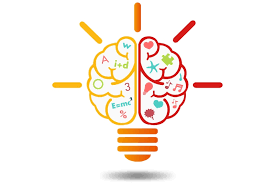DỊCH HOÀN THIỆN ĐỀ THI IELTS READING VÀ GIẢI THÍCH ĐÁP ÁN:
Numeration
A. One of the first great intellectual feats of a young child is learning how to talk, closely followed by learning how to count. From earliest childhood, we are so bound up with our system of numeration that it is a feat of imagination to consider the problems faced by early humans who had not yet developed this facility. Careful consideration of our system of numeration leads to the conviction that, rather than being a facility that comes naturally to a person, it is one of the great and remarkable achievements of the human race. ĐOẠN 1
Một trong những kỳ tích trí tuệ vĩ đại đầu tiên của trẻ nhỏ là học nói, theo sát đó là học đếm. Ngay từ thời thơ ấu, chúng ta đã bị ràng buộc với hệ thống số đến mức chúng ta phải dùng hết sức tưởng tượng mới hiểu được các vấn đề mà người nguyên thủy những người mà vẫn chưa phát triển được khả năng đếm số phải đối mặt. Việc suy xét kỹ lưỡng hệ thống số đếm của chúng ta dẫn đến niềm tin rằng thay vì là một khả năng tự nhiên của một người thì hệ thống số đếm là một trong những thành tựu vĩ đại và đáng chú ý của loài người.
B. It is impossible to learn the sequence of events that led to our developing the concept of number. Even the earliest of tribes had a system of numeration that, if not advanced, was sufficient for the tasks that they had to perform. Our ancestors had little use for actual numbers; instead, their considerations would have been more of the kind Is this enough? rather than How many? when they were engaged in food gathering, for example. However, when early humans first began to reflect on the nature of things around them, they discovered that they needed an idea of number simply to keep their thoughts in order. As they began to settle, grow plants and herd animals, the need for a sophisticated number system became paramount. It will never be known how and when this numeration ability developed, but it is certain that numeration was well developed by the time humans had formed even semipermanent settlements. ĐOẠN 2
Vì không thể học được chuỗi các sự kiện dẫn đến việc chúng ta phát triển khái niệm về số. Ngay cả những bộ lạc xa xưa nhất cũng có một hệ thống đánh số, nếu không tân tiến, thì cũng đủ cho những nhiệm vụ mà họ phải thực hiện. Tổ tiên của chúng ta ít sử dụng đến những con số đúng nghĩa; thay vào đó, những tính toán của họ sẽ thuộc loại Thế này đã đủ chưa? thay vì Bao nhiêu? chẳng hạn như khi họ tham gia vào việc hái lượm thức ăn. Tuy nhiên, khi những người nguyên thủy đầu tiên bắt đầu suy nghĩ về bản chất của mọi thứ xung quanh họ, họ phát hiện ra rằng họ cần một ý tưởng về số đơn giản để giữ cho suy nghĩ của họ theo thứ tự. Khi họ bắt đầu định cư, trồng trọt và chăn nuôi gia súc, nhu cầu về một hệ thống số phức tạp trở nên tối quan trọng. Sẽ không bao giờ biết được hệ thống đếm số này phát triển như thế nào và khi nào, nhưng chắc chắn rằng hệ thống đếm số đã phát triển tốt vào thời điểm con người hình thành các khu định cư ngay cả là bán cố định.
C. Evidence of early stages of arithmetic and numeration can be readily found. The indigenous peoples of Tasmania were only able to count one, two, many; those of South Africa counted one, two, two and one, two twos, two twos and one, and so on. But in real situations the number and words are offen accompanied by gestures to help resolve any confusion. For example, when using the one, two, many types of system, the word many would mean, Look my hands and see how many fingers I am showing you. This basic approach is limited in the range of numbers that it can express, but this range will generally suffice when dealing with the simpler aspects of human existence. ĐOẠN 3
Có thể dễ dàng tìm thấy bằng chứng về các giai đoạn đầu của số học và hệ thống đếm số. Người dân bản địa của Tasmania chỉ có thể đếm một, hai, nhiều; người dân bản địa của Nam Phi đếm một, hai, hai và một, hai lần hai, hai lần hai và một, v.v. Nhưng trong các tình huống thực tế, số đếm và từ ngữ thường đi kèm với cử chỉ để giúp giải quyết bất kỳ sự nhầm lẫn nào. Ví dụ: khi sử dụng loại hệ thống "một, hai, nhiều ", từ "nhiều" sẽ có nghĩa là Hãy nhìn bàn tay của tôi và xem tôi đang chỉ cho bạn bao nhiêu ngón tay. Cách tiếp cận cơ bản này bị giới hạn trong phạm vi số đếm mà nó có thể biểu thị, nhưng phạm vi này nói chung sẽ đủ khi giải quyết các khía cạnh đơn giản hơn về sự tồn tại loài người.

1. Mua bộ đề gần 400 bài ielts reading - Dịch và giải chi tiết Chỉ 199k bao gồm toàn bộ đề trong bộ Cambridge ( từ bộ 1 -19) và nhiều đề thi thực tế ( xem danh sách 400 đề ielts reading tại đây). Xem bài mẫu tại đây, Bài mẫu 1, bài mẫu 2, bài mẫu 3. Giải đề bao gồm phần dịch bài đọc, dịch phần câu hỏi, giải thích chi tiết, ( chỉ có thể tải, in phần đề để luyện tập, phần giải chi tiết và dịch chỉ xem online).
>>>>>>> Đặc biệt tặng kèm Dịch và giải chi tiết bộ đề Ielts listening từ Cam 10-18 và tặng kèm hơn 300 đề Ielts thực tế ( không có lời giải chi tiết chỉ có đề và đáp án) ( khác với bộ 400 đề ở trên). Vui lòng điền thông tin theo form tại đây và thanh toán theo thông tin CK trong form.
2. Đặc biệt dành tặng 100 bạn hoàn thành buổi học thử miễn phí khóa học Ielts Speaking online 1 kèm 1, các bạn sẽ được tặng bộ đề 400k bài Ielts reading và bộ đề Ielts Listening bộ Cam từ 10-18 gồm bài dịch và giải chi tiết, giải thích từ vựng khó ( thời hạn sử dụng trong vòng 2 tháng). Xem thông tin khóa học Ielts Speaking online 1 kèm 1 và đăng ký học thử tại đây.
D. The lack of ability of some cultures to deal with large numbers is not really surprising. European languages, when traced back to their earlier version, are very poor in number words and expressions. The ancient Gothic word for ten, tachund, is used to express the number 100 as tachund tachund. By the seventh century, the word teon had become interchangeable with the tachund or hund of the Anglo-Saxon language, and so 100 was denoted as hund teontig, or ten times ten. The average person in the seventh century in Europe was not as familiar with numbers as we are today. In fact, to qualify as a witness in a court of law a man had to be able to count to nine! ĐOẠN 4
E. Perhaps the most fundamental step in developing a sense of number is not the ability to count, but rather to see that a number is really an abstract idea instead of a simple attachment to a group of particular objects. It must have been within the grasp of the earliest humans to conceive that four birds are distinct from two birds; however, it is not an elementary step to associate the number 4, as connected with four birds, to the number 4, as connected with four rocks. Associating a number as one of the qualities of a specific object is a great hindrance to the development of a true number sense. When the number 4 can be registered in the mind as a specific word, independent of the object being referenced, the individual is ready to take the first step toward the development of a notational system for numbers and, from there, to arithmetic. ĐOẠN 5
F. Traces of the very first stages in the development of numeration can be seen in several living languages today. The numeration system of the Tsimshian language in British Columbia contains seven distinct sets of words for numbers according to the class of the item being counted: for counting flat objects and animals, for round objects and time, for people, for long objects and trees, for canoes, for measures, and for counting when no particular object is being enumerated. It seems that the last is a later development while the first six groups show the relics of an older system. This diversity of number names can also be found in some widely used languages such as Japanese. ĐOẠN 6
G. Intermixed with the development of a number sense is the development of an ability to count. Counting is not directly related to the formation of a number concept because it is possible to count by matching the items being counted against a group of pebbles, grains of corn, or the counter's fingers. These aids would have been indispensable to very early people who would have found the process impossible without some form of mechanical aid. Such aids, while different, are still used even by the most educated in today's society due to their convenience. All counting ultimately involves reference to something other than the things being counted. At first, it may have been grains or pebbles but now it is a memorised sequence of words that happen to be the names of the numbers. ĐOẠN 7
>>>>> Xem thêm:
♦ Tổng hợp câu trả lời, câu hỏi, từ vựng của hơn 70 chủ đề Ielts Speaking part 1
♦ Tổng hợp gần 400 đề thi Ielts reading ( bao gồm dịch, giải chi tiết, từ vựng)
Questions 27-31
Complete each sentence with the correct ending, A-G, below.
Write the correct letter, A-G, in boxes 27-31 on your answer sheet.
A was necessary in order to fulfil a civic role.
B was necessary when people began farming.
C was necessary for the development of arithmetic.
D persists in all societies.
E was used when the range of number words was restricted.
F can be traced back to early European languages.
G was a characteristic of early numeration systems.
27 A developed system of numbering
28 An additional hand signal
29 In seventh-century Europe, the ability to count to a certain number
30 Thinking about numbers as concepts separate from physical objects
31 Expressing number differently according to class of item
Questions 32-40
Do the following statements agree with the information given in Reading Passage 62?
In boxes 32-40 on your answer sheet, write:
TRUE if the statement agrees with the information
FALSE if the statement contradicts the information
NOT GIVEN if there is no information on this
32 For the earliest tribes, the concept of sufficiency was more important than the concept of quantity.
33 Indigenous Tasmanians used only four terms to indicate numbers of objects.
34 Some peoples with simple number systems use body language to prevent misunderstanding of expressions of the number.
35 All cultures have been able to express large numbers clearly.
36 The word 'thousand' has Anglo-Saxon origins.
37 In general, people in seventh-century Europe had poor counting ability.
38 In the Tsimshian language, the number for long objects and canoes is expressed with the same word.
39 The Tsimshian language contains both older and newer systems of counting.
40 Early peoples found it easier to count by using their fingers rather than a group of pebbles.
ĐÁP ÁN, GIẢI CHI TIẾT và DỊCH HOÀN THIỆN ĐỀ THI IELTS READING:
Numeration
Questions 27-31
Complete each sentence with the correct ending, A-G, below.
27.B A developed system of numbering
Một hệ thống đánh số được phát triển
Giải thích: đoạn B
As they began to settle, grow plants and herd animals, the need for a sophisticated number system became paramount.
28.E An additional hand signal
Một tín hiệu tay bổ sung
Giải thích: đoạn C
When the number 4 can be registered in the mind as a specific word, independent of the object being referenced, the individual is ready to take the first step toward the development of a notational system for numbers and, from there, to arithmetic.
Questions 32-40
Do the following statements agree with the information given in Reading Passage 62?
In boxes 32-40 on your answer sheet, write:
TRUE if the statement agrees with the information
FALSE if the statement contradicts the information
NOT GIVEN if there is no information on this
32.T For the earliest tribes, the concept of sufficiency was more important than the concept of quantity.
Đối với những bộ lạc sơ khai nhất, khái niệm về sự đầy đủ quan trọng hơn khái niệm về số lượng.
Giải thích: đoạn B
Our ancestors had little use for actual numbers; instead, their considerations would have been more of the kind Is this enough? rather than How many? when they were engaged in food gathering, for example.
33.F Indigenous Tasmanians used only four terms to indicate numbers of objects.
Người Tasmania bản địa chỉ sử dụng bốn thuật ngữ để chỉ số lượng đồ vật.
Giải thích: đoạn C, ba chứ không phải bốn
The indigenous peoples of Tasmania were only able to count one, two, many
Answer:
27. B 28. E 29. A 30. C 31. G 32. TRUE 33. FALSE 34. TRUE 35. FALSE 36. NOT GIVEN 37. TRUE 38. FALSE 39. TRUE 40. NOT GIVEN
1. Mua bộ đề gần 400 bài ielts reading - Dịch và giải chi tiết Chỉ 199k bao gồm toàn bộ đề trong bộ Cambridge ( từ bộ 1 -19) và nhiều đề thi thực tế ( xem danh sách 400 đề ielts reading tại đây). Xem bài mẫu tại đây, Bài mẫu 1, bài mẫu 2, bài mẫu 3. Giải đề bao gồm phần dịch bài đọc, dịch phần câu hỏi, giải thích chi tiết, ( chỉ có thể tải, in phần đề để luyện tập, phần giải chi tiết và dịch chỉ xem online).
>>>>>>> Đặc biệt tặng kèm Dịch và giải chi tiết bộ đề Ielts listening từ Cam 10-18 và tặng kèm hơn 300 đề Ielts thực tế ( không có lời giải chi tiết chỉ có đề và đáp án) ( khác với bộ 400 đề ở trên). Vui lòng điền thông tin theo form tại đây và thanh toán theo thông tin CK trong form.
2. Đặc biệt dành tặng 100 bạn hoàn thành buổi học thử miễn phí khóa học Ielts Speaking online 1 kèm 1, các bạn sẽ được tặng bộ đề 400k bài Ielts reading và bộ đề Ielts Listening bộ Cam từ 10-18 gồm bài dịch và giải chi tiết, giải thích từ vựng khó ( thời hạn sử dụng trong vòng 2 tháng). Xem thông tin khóa học Ielts Speaking online 1 kèm 1 và đăng ký học thử tại đây.

.png)

.jpg)




